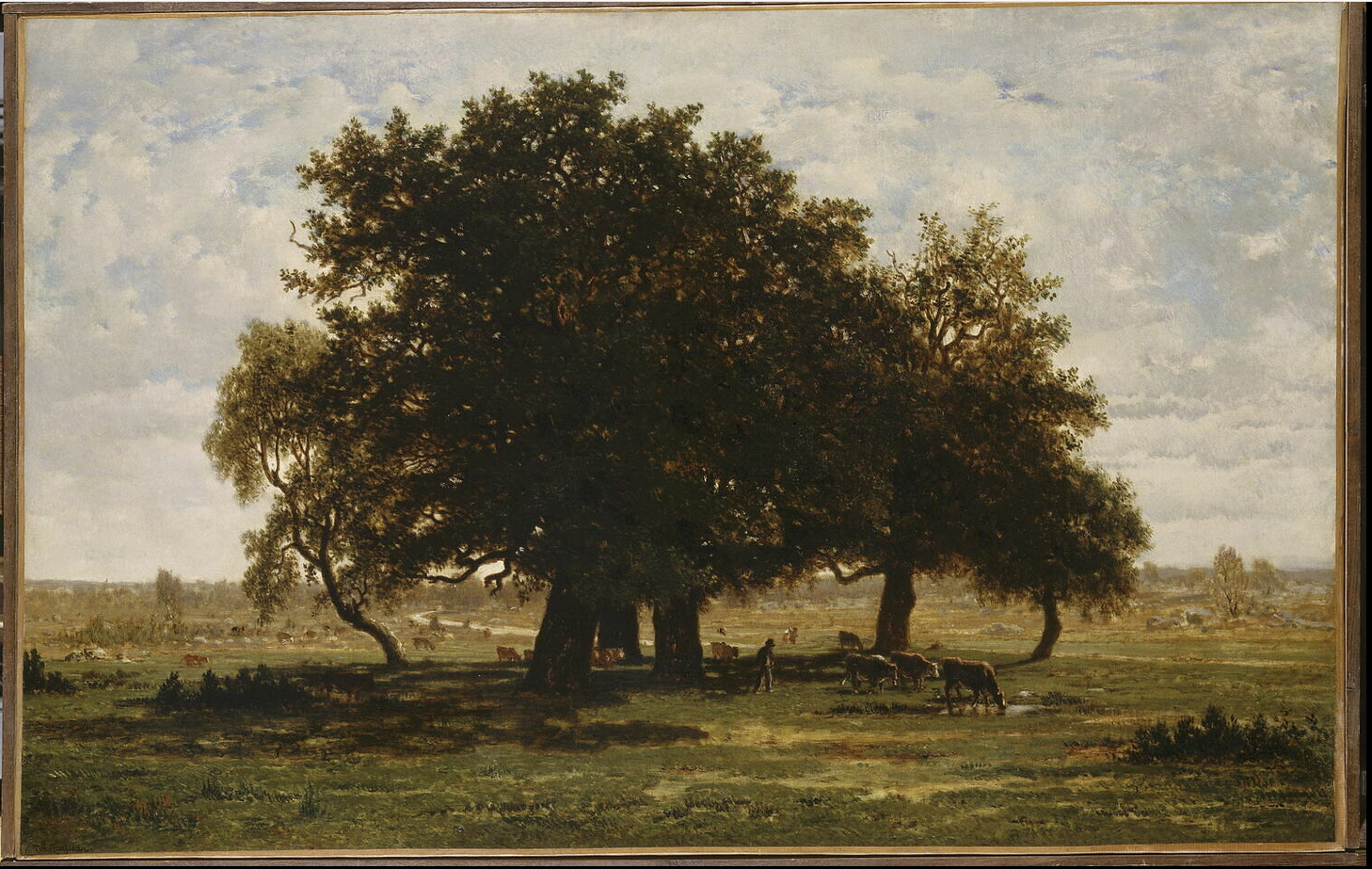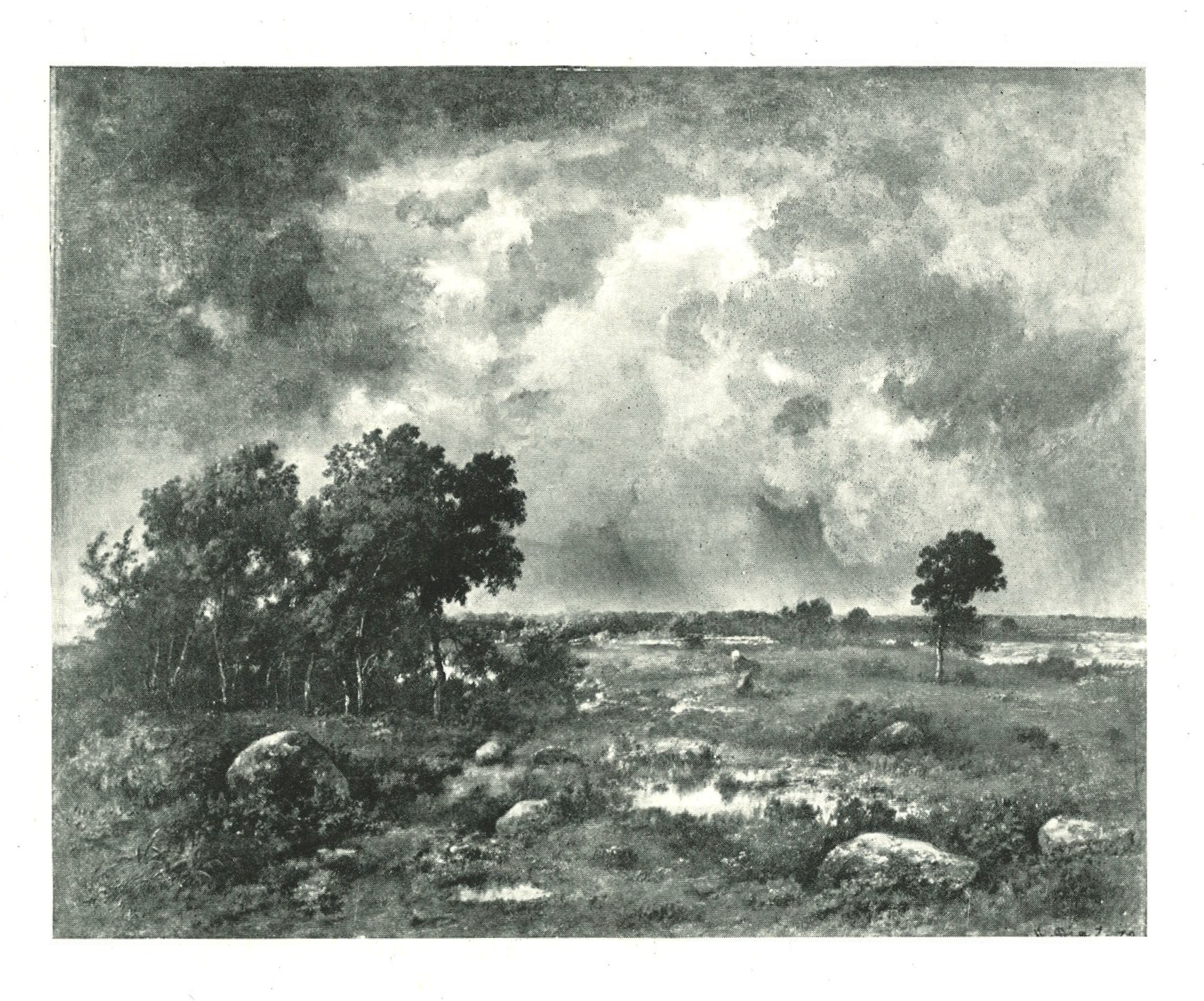![]()
Narcisse Virgile Diaz de la Peña, The Approaching Storm, 1872
| Artist | Narcisse Virgile Diaz de la Peña, French, 1807–1876 |
| Title | The Approaching Storm |
| Object Date | 1872 |
| Alternate and Variant Titles | Landscape; Coming Storm |
| Medium | Oil on wood panel |
| Dimensions (Unframed) | 31 1/8 x 41 3/8 in. (79.1 x 105.1 cm) |
| Signature | Signed and dated lower right: n. DiaZ. 72. |
| Credit Line | The Nelson-Atkins Museum of Art. Purchase: William Rockhill Nelson Trust, 31-60 |
Catalogue Entry
Citation
Chicago:
Simon Kelly, “Narcisse Virgile Diaz de la Peña, The Approaching Storm, 1872,” catalogue entry in ed. Aimee Marcereau DeGalan French Paintings and Pastels, 1600–1945: The Collections of the Nelson-Atkins Museum of Art (Kansas City: The Nelson-Atkins Museum of Art, 2021), https://doi.org/10.37764/78973.5.514.5407.
MLA:
Kelly, Simon. “Narcisse Virgile Diaz de la Peña, The Approaching Storm, 1872,” catalogue entry. French Paintings and Pastels, 1600–1945: The Collections of the Nelson-Atkins Museum of Art, edited by Aimee Marcereau DeGalan, The Nelson-Atkins Museum of Art, 2021. doi: 10.37764/78973.5.514.5407.
The Approaching Storm highlights Narcisse Virgile Diaz de la Peña’s facility as a landscape painter. It represents a dramatic light effect over the plain of the Gorges d’Apremont in the Forest of Fontainebleau. The artist renders a gathering tempest with rapidly worked, wet-into-wetwet-into-wet: An oil painting technique which involves blending of colors on the picture surface., lowering dark clouds surrounding an area of still blue sky. Amid this threatening atmosphere, a solitary woman, bearing a bundle of sticks on her back, walks along a path by a copse of oak trees and outcroppings of sandstone rock. Painted in 1872, at a time when the Impressionists were encouraging an interest in capturing evanescent effects of light, the painting highlights Diaz’s ability to render a transient moment in time.
Throughout his career, Diaz painted en plein airen plein air (adjective: plein-air): French for “outdoors.” The term is used to describe the act of painting quickly outside rather than in a studio. in the Forest of Fontainebleau, producing effetseffets: French for “effects.” An artist’s emphasis on the atmospheric effects of time and weather on the subject matter. and études d’après nature (studies from nature). He first came to the forest in the mid-1830s and worked in the company of Théodore Rousseau (1812–1867). By 1847, he maintained a cottage and studio in the nearby village of Barbizon, becoming a central figure in the colony of artists there.1In 1847, Théophile Thoré noted that Diaz had rented a cottage at Barbizon where a “colony of landscape painters” had “installed themselves” in the last “ten years”: “Diaz has rented there a peasant’s cabin, a palace for the area, two rooms on the ground floor with a barn, an entry court and a little shrubbery.” (“Les peintres cependant ont découvert Barbison comme une terre promise, et, depuis une dizaine d’années, il s’y installe chaque été une colonie de paysagistes. Diaz y a loué une cabane de paysan, un des châteaux du pays, deux chambres au rez-de-chaussée avec une grange, une cour d’entrée et un petit buisson.”) See Théophile Thoré, “Par monts et par bois,” Le Constitutionnel (November 27, 1847): 1. By 1856, Diaz had bought a cottage. See Nicholas Green, The Spectacle of Nature: Landscape and Bourgeois Culture in Nineteenth-Century France (Manchester: Manchester University Press, 1990), 118, 201n158. Diaz regularly painted outdoors, nimbly navigating the challenging terrain of the forest, even though he had lost a leg as a child after a snakebite. Along with the interior forest sous-boissous-bois: French for ”undergrowth“ A genre of paintings of the forest floor made popular by the Barbizon painters from the 1830s to about 1870. subjects for which he became particularly known, Diaz produced a large number of views of the expansive plains around the Forest of Fontainebleau. The copse of trees that he depicted in The Approaching Storm was a landmark of the Gorges d’Apremont, known as “the Dormoir,” where cowherds would pasture their cows. It was often represented not only by Diaz but also by his Barbizon colleagues like Rousseau, as in the latter’s Group of Oaks in the Gorges d’Apremont (Fig. 1).
The figure of the stick-gatherer in The Approaching Storm also carried meaning at a time when the peasantry of the forest were threatened by the rise of modern farming methods. The collecting of faggots, or bundles of sticks, was a privilege for residents of the Forest of Fontainebleau, whether those who lived in the forest itself, like charcoal burners, or those who lived in the surrounding villages. It was closely monitored by the forest authorities, with strict rules following an edict of 1853.2Greg Thomas, Art and Ecology in Nineteenth-Century France: The Landscapes of Théodore Rousseau (Princeton, NJ: Princeton University Press, 2000), 155. The gathering of wood for fuel was restricted to women, children, and old or sick men, and this accounts for the fact that the gatherers in Diaz’s paintings are generally female. Faggot-gathering was allowed for nine months of year—it was forbidden from April 1 to July 1—and gathered sticks were also supposed to have a maximum length of eight inches. In the Nelson-Atkins painting, Diaz was showing an activity that was crucial to the livelihood of the peasantry in the forest. Although Diaz’s staffagestaffage: Small figures or animals used to enliven a landscape or architectural painting. has generally been seen as apolitical, it is possible to argue that the artist’s small central figure, bowed down under her burden of wood and viewed within the expansive plain, referenced the precarity of peasant existence.
The Approaching Storm shows the vibrant, gestural facture for which Diaz was known.3Somewhat anomalously, Diaz also produced a major painting of nudes in a linear manner, reminiscent of Ary Scheffer (1795–1858), The Last Tears (Chi-Mei Museum, Tainan City, Taiwan), shown at the 1855 Exposition Universelle. He was a very prolific artist, producing around 3,200 paintings in genres that included not only landscape but also mythologically themed nudes, OrientalistOrientalist: An art-historical term for subject matter depicting the Near East by western artists, primarily in the nineteenth century. scenes, and flower paintings.4Pierre Miquel and Rolande Miquel, Narcisse Diaz de la Peña: Monographie et catalogue raisonné de l’œuvre peint (Paris: ACR Édition, 2006). Often he was criticized for his rapid production for the market. His biographer, Théophile Silvestre, noted that he produced work with the “rapidity of a factory” and lamented the lack of study in the artist’s work as well as the lack of any preparatory drawing on his canvases.5“La rapidité d’une usine,” Théophile Silvestre, Histoire des Artistes Vivants Français et Étrangers, Études d’Après Nature (Paris: E. Blanchard, 1856), 227. This critique was regularly repeated, notably by the critic Jules Claretie.6Jules Claretie, Peintres et Sculpteurs Contemporains (Paris: Charpentier et Cie, 1873), 32. Yet, of all Diaz’s works, his landscapes attracted the greatest critical praise and were generally exempted from the charge of excessive facility. In the case of these works, indeed, his rapid brushwork offered benefits in helping to capture effects of changing light and weather. Silvestre argued that his landscapes were the strongest area of his production.7“Les meilleures peintures de Diaz sont, à mon goût, ses paysages.” Silvestre, Histoire des Artistes Vivants, 230. So, too, did the critic Philippe Burty, who claimed that they made him “worthy of joining the group of French masters.”8“C’est un paysagiste de la plus rare élégance. . . . C’est ce qui le fait digne d’entrer dans le groupe des maîtres français.” Philippe Burty, Diaz in Maîtres et Petits Maîtres (Paris: G. Charpentier, 1877), 366.
The Approaching Storm shows Diaz’s facility with color. Claretie described him as “profoundly and valiantly a colorist,” and the critic Théophile Thoré compared his surfaces to “a pile of jewels.”9“Si profondément et si vaillamment coloriste,” Jules Claretie, “N. Diaz de la Peña” in Exposition des Œuvres de N. Diaz de la Peña (Paris: Imprimerie Jules Claye, 1877), 25; “Un monceau de pierreries,” Théophile Thoré, Salon de 1844 (Paris: Alliance des Arts, 1844), 34. The Nelson-Atkins painting is particularly notable for its pink groundground layer: An opaque preparatory layer applied to the support, either commercially or by the artist, to prevent absorption of the paint into the canvas or panel. See also priming layer., clearly visible in the sky, that complements the tints of the foliage.10See technical entry by Mary Schafer, NAMA painting conservator, July 13, 2009, NAMA conservation files. As yet, little work has been done on the Barbizon artists’ interest in colored grounds, but this was an important area of Diaz’s production, as well as Rousseau’s. Elsewhere, Diaz represents his clouds in a subtle range of dark grays, browns, and creams, while he animates his dark green foliage and scrubby foreground with areas of light green and touches of red, light blue, and pink. Diaz’s abilities as a colorist were particularly admired by the Impressionist Pierre-Auguste Renoir (1841–1919), who was mentored by the elder artist in the 1860s.
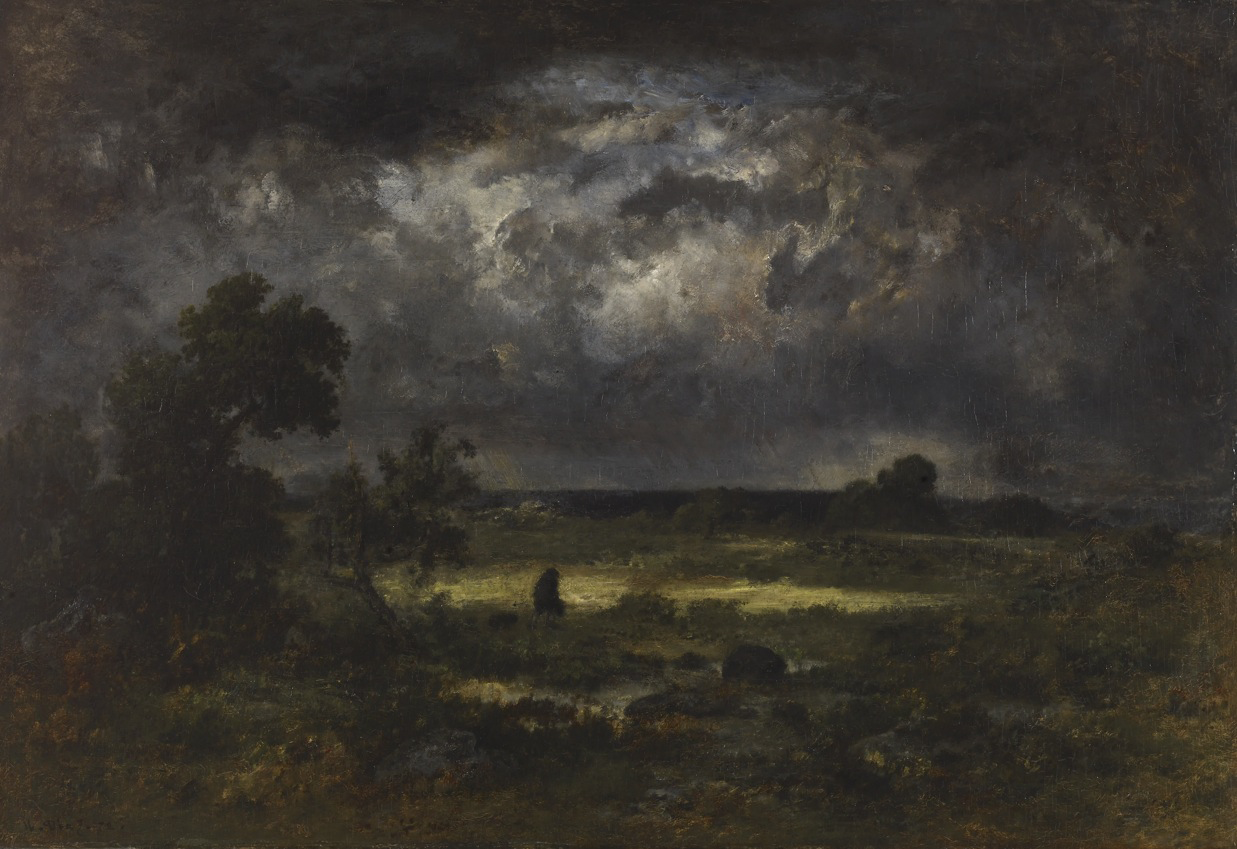
From 1870, Diaz enjoyed growing international patronage, particularly following the several months he spent in Brussels during the Franco-Prussian WarFranco-Prussian War: The war of 1870–1871 between France (under Napoleon III) and Prussia, in which Prussian troops advanced into France and decisively defeated the French at Sedan. The defeat marked the end of the French Second Empire. For Prussia, the proclamation of the new German Empire at Versailles was the climax of Bismarck’s ambitions to unite Germany. from 1870 to 1871. Durand-Ruel, who himself opened a gallery in Brussels in 1871, wrote that Diaz’s time in the Belgian capital “had put him in contact with many foreign dealers and collectors” and “had raised his prices.”16Durand-Ruel and Durand-Ruel, Paul Durand-Ruel: Memoirs, 94. As Durand-Ruel indicated, a wide range of collectors, principally European and American, bought his work in the 1870s, often through the intermediary of the dealer himself. The earliest known owner of the Nelson-Atkins painting was German stockbroker and art collector Adolph Thiem, who had the painting by 1881. Thiem may have purchased the painting on the advice of German art historian and curator of the Königliches Museum in Berlin, Wilhelm von Bode. Diaz’s picture not only sums up his formal experimentation and understanding of the history of the forest of Fontainebleau but also provides insight into the international markets that developed around his work late in his career.
Notes
-
In 1847, Théophile Thoré noted that Diaz had rented a cottage at Barbizon where a “colony of landscape painters” had “installed themselves” in the last “ten years”: “Diaz has rented there a peasant’s cabin, a palace for the area, two rooms on the ground floor with a barn, an entry court and a little shrubbery.” (“Les peintres cependant ont découvert Barbison comme une terre promise, et, depuis une dizaine d’années, il s’y installe chaque été une colonie de paysagistes. Diaz y a loué une cabane de paysan, un des châteaux du pays, deux chambres au rez-de-chaussée avec une grange, une cour d’entrée et un petit buisson.”) See Théophile Thoré, “Par monts et par bois,” Le Constitutionnel (November 27, 1847): 1. By 1856, Diaz had bought a cottage. See Nicholas Green, The Spectacle of Nature: Landscape and Bourgeois Culture in Nineteenth-Century France (Manchester: Manchester University Press, 1990), 118, 201n158.
-
Greg Thomas, Art and Ecology in Nineteenth-Century France: The Landscapes of Théodore Rousseau (Princeton, NJ: Princeton University Press, 2000), 155.
-
Somewhat anomalously, Diaz also produced a major painting of nudes in a linear manner, reminiscent of Ary Scheffer (1795–1858), The Last Tears (Chi-Mei Museum, Tainan City, Taiwan), shown at the 1855 Exposition Universelle.
-
Pierre Miquel and Rolande Miquel, Narcisse Diaz de la Peña: Monographie et catalogue raisonné de l’œuvre peint (Paris: ACR Édition, 2006).
-
“La rapidité d’une usine,” Théophile Silvestre, Histoire des Artistes Vivants Français et Étrangers, Études d’Après Nature (Paris: E. Blanchard, 1856), 227.
-
Jules Claretie, Peintres et Sculpteurs Contemporains (Paris: Charpentier et Cie, 1873), 32.
-
“Les meilleures peintures de Diaz sont, à mon goût, ses paysages.” Silvestre, Histoire des Artistes Vivants, 230.
-
“C’est un paysagiste de la plus rare élégance. . . . C’est ce qui le fait digne d’entrer dans le groupe des maîtres français.” Philippe Burty, Diaz in Maîtres et Petits Maîtres (Paris: G. Charpentier, 1877), 366.
-
“Si profondément et si vaillamment coloriste,” Jules Claretie, “N. Diaz de la Peña” in Exposition des Œuvres de N. Diaz de la Peña (Paris: Imprimerie Jules Claye, 1877), 25; “Un monceau de pierreries,” Théophile Thoré, Salon de 1844 (Paris: Alliance des Arts, 1844), 34.
-
See technical entry by Mary Schafer, NAMA painting conservator, July 13, 2009, NAMA conservation files. As yet, little work has been done on the Barbizon artists’ interest in colored grounds, but this was an important area of Diaz’s production, as well as Rousseau’s.
-
See The Storm in Sarah Herring, The Nineteenth Century French Paintings vol. 1, The Barbizon School (London: National Gallery Press, 2019), 343–47. See also The Storm, undated, Art Gallery of Ontario, Toronto; Stormy Landscape, 1872, Los Angeles County Museum of Art. It is possible that the Nelson-Atkins painting was one of two works that appeared in the artist’s posthumous 1877 retrospective at the École des Beaux-Arts: no. 111, Les Grès; effet d’orage. 1872; or no. 112, L’Orage en plaine, 1872. See Exposition des Œuvres de N. Diaz de la Peña (Paris: Imprimerie Jules Claye, 1877), 51–52.
-
The wood of NAMA’s panel is estimated to be mahogany. See accompanying technical essay by Mary Schafer, Nelson-Atkins paintings conservator.
-
Paul-Louis Durand-Ruel and Flavie Durand-Ruel, eds., Paul Durand-Ruel: Memoirs of the First Impressionist Art Dealer (1831–1922) (Paris: Flammarion, 2014), 138.
-
See no. 423 in Catalogue de la Vente qui aura lieu par suite du décès de N. Diaz de la Peña (Paris: Labitte, January 22–24, 1877), 77.
-
See no. 683 in Catalogue de la Vente qui aura lieu par suite du décès de N. Diaz de la Peña, 114.
-
Durand-Ruel and Durand-Ruel, Paul Durand-Ruel: Memoirs, 94.
Technical Entry
Citation
Chicago:
Mary Schafer, “Narcisse Virgile Diaz de la Peña, The Approaching Storm, 1872,” technical entry in ed. Aimee Marcereau DeGalan French Paintings and Pastels, 1600–1945: The Collections of the Nelson-Atkins Museum of Art (Kansas City: The Nelson-Atkins Museum of Art, 2021), https://doi.org/10.37764/78973.5.514.2088.
MLA:
Schafer, Mary. “Narcisse Virgile Diaz de la Peña, The Approaching Storm, 1872,” technical entry. French Paintings and Pastels, 1600–1945: The Collections of the Nelson-Atkins Museum of Art, edited by Aimee Marcereau DeGalan, The Nelson-Atkins Museum of Art, 2021. doi: 10.37764/78973.5.514.2088.
Virgile Narcisse Diaz de la Peña (1807–1876) executed The Approaching Storm with loose, vigorous brushwork, producing movement and a tactile quality that heightens the drama of the scene. The large panel consists of a single piece of wood, horizontally-grained, and estimated to be mahogany.1Diaz frequently painted on large panel supports despite recommendations against their use; see, for example, Lisière de Fôret (1871; Musèe D’Orsay) and The Storm (1871; National Gallery of Art, London). Stéphanie Constantin, “The Painters of the Barbizon Circle and Landscape Paintings: Techniques and Working Methods” (PhD diss., Courtauld Institute of Art, 2001), 160–61. The high-quality panel is likely to have been purchased from an artist supplierartist supplier(s): Also called colormen and color merchants. Artist suppliers prepared materials for artists. This tradition dates back to the Medieval period, but the industrialization of the nineteenth century increased their commerce. It was during this time that ready-made paints in tubes, commercially prepared canvases, and standard-format supports were available to artists for sale through these suppliers. It is sometimes possible to identify the supplier from stamps or labels found on the reverse of the artwork (see canvas stamp)., although no stamp or label are present on the panel reverse. The panel was primed with an opaque, pale pink groundground layer: An opaque preparatory layer applied to the support, either commercially or by the artist, to prevent absorption of the paint into the canvas or panel. See also priming layer., and its warm blush tonality is an integral feature of the landscape.2Constantin, “The Painters of the Barbizon Circle and Landscape Paintings,” 164. “[The Barbizon painters] mostly chose white or off-white preparations. Occasionally they would paint on toned preparations of a light gray or brown colour or, more rarely, on supports prepared in strong yellow ochre, lilac-pink, brown or even reddish orange.” Glimpses of the ground layer remain visible throughout the painting, particularly among the lower clouds and in the foreground. In the sky, Diaz made efficient use of this pink layer, allowing it to form the basis of a lower right cloud and simply adding dark gray paint to delineate the outer edges of the shape (Fig. 4). No clear underdrawingunderdrawing: A drawn or painted sketch beneath the paint layer. The underdrawing can be made from dry materials, such as graphite or charcoal, or wet materials, such as ink or paint. is evident using infrared reflectographyinfrared reflectography (IRR): A form of infrared imaging that exploits the behavior of painting materials at wavelengths beyond those accessible to infrared photography. These advantages sometimes include a continuing increase in the transparency of pigments beyond wavelengths accessible to infrared photography (i.e, beyond 1,000 nanometers), rendering underdrawing more clearly. The resulting image is called an infrared reflectogram. Devices that came into common use in the 1980s such as the infrared vidicon effectively revealed these features but suffered from lack of sharpness and uneven response. Vidicons continue to be used out to 2,200 nanometers but several newer pixelated detectors including indium gallium arsenide and indium antimonide array detectors offer improvements. All of these devices are optimally used with filters constraining their response to those parts of the infrared spectrum that reveal the most within the constraints of the palette used for a given painting. They can be used for transmitted light imaging as well as in reflection., although in the early stages of painting, fine strokes of brown paint appear to have been used to loosely mark the principal trunks and branches of the center left trees.
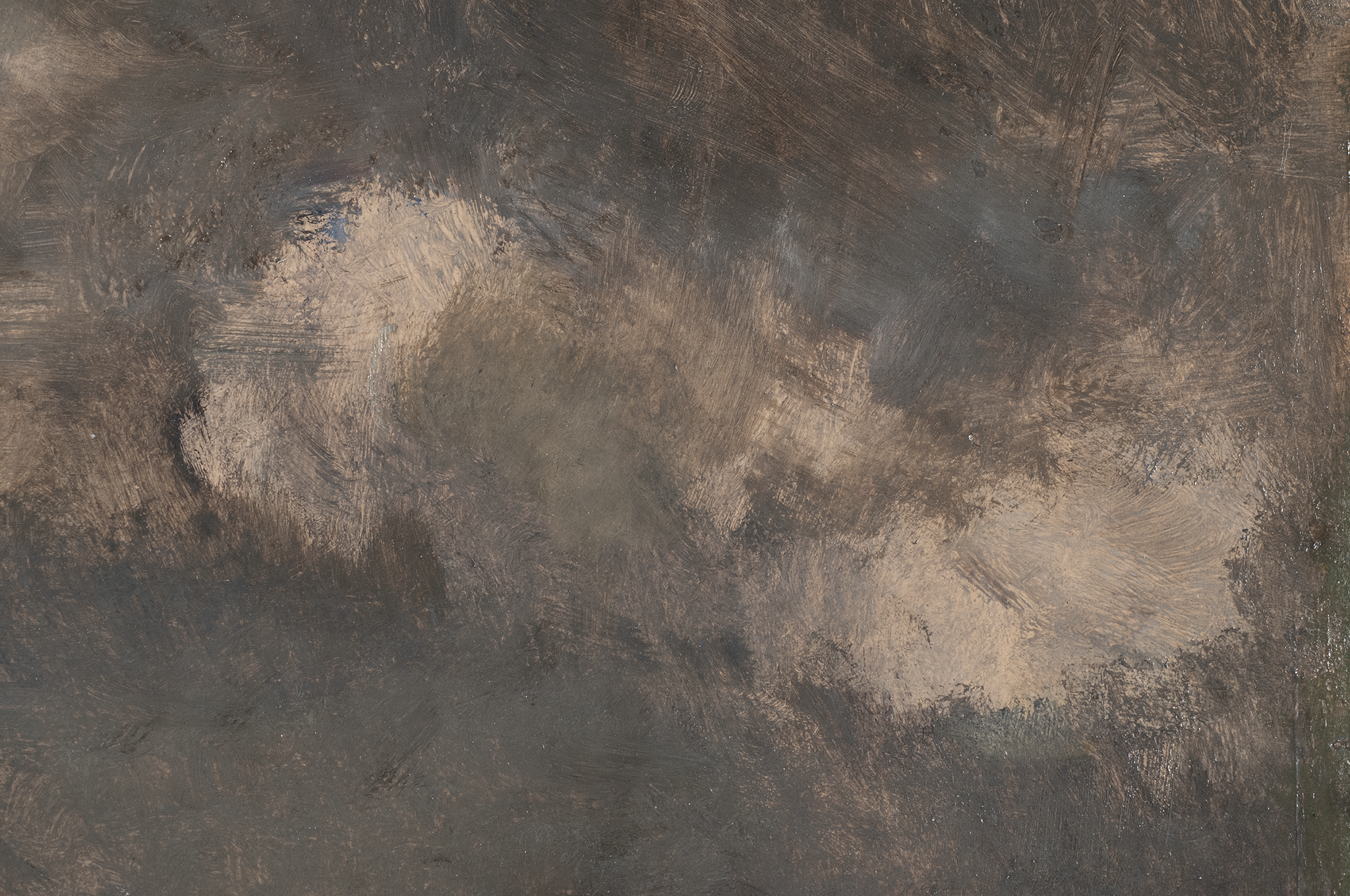 Fig. 4. Detail of the lower right cloud, The Approaching Storm (1872)
Fig. 4. Detail of the lower right cloud, The Approaching Storm (1872)
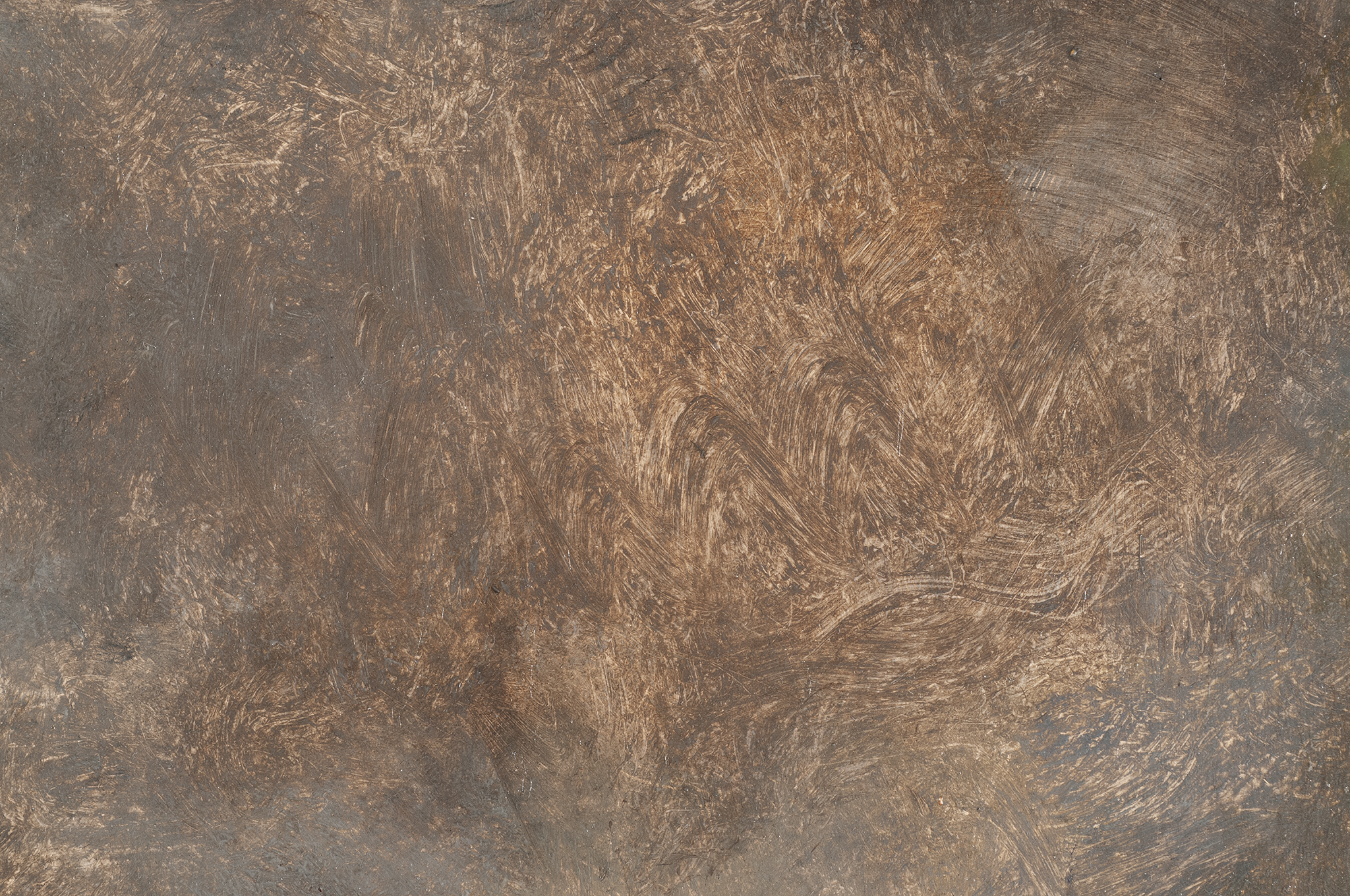 Fig. 5. Detail of the upper right corner, zigzagging brushwork in the thinly painted sky of The Approaching Storm (1872)
Fig. 5. Detail of the upper right corner, zigzagging brushwork in the thinly painted sky of The Approaching Storm (1872)
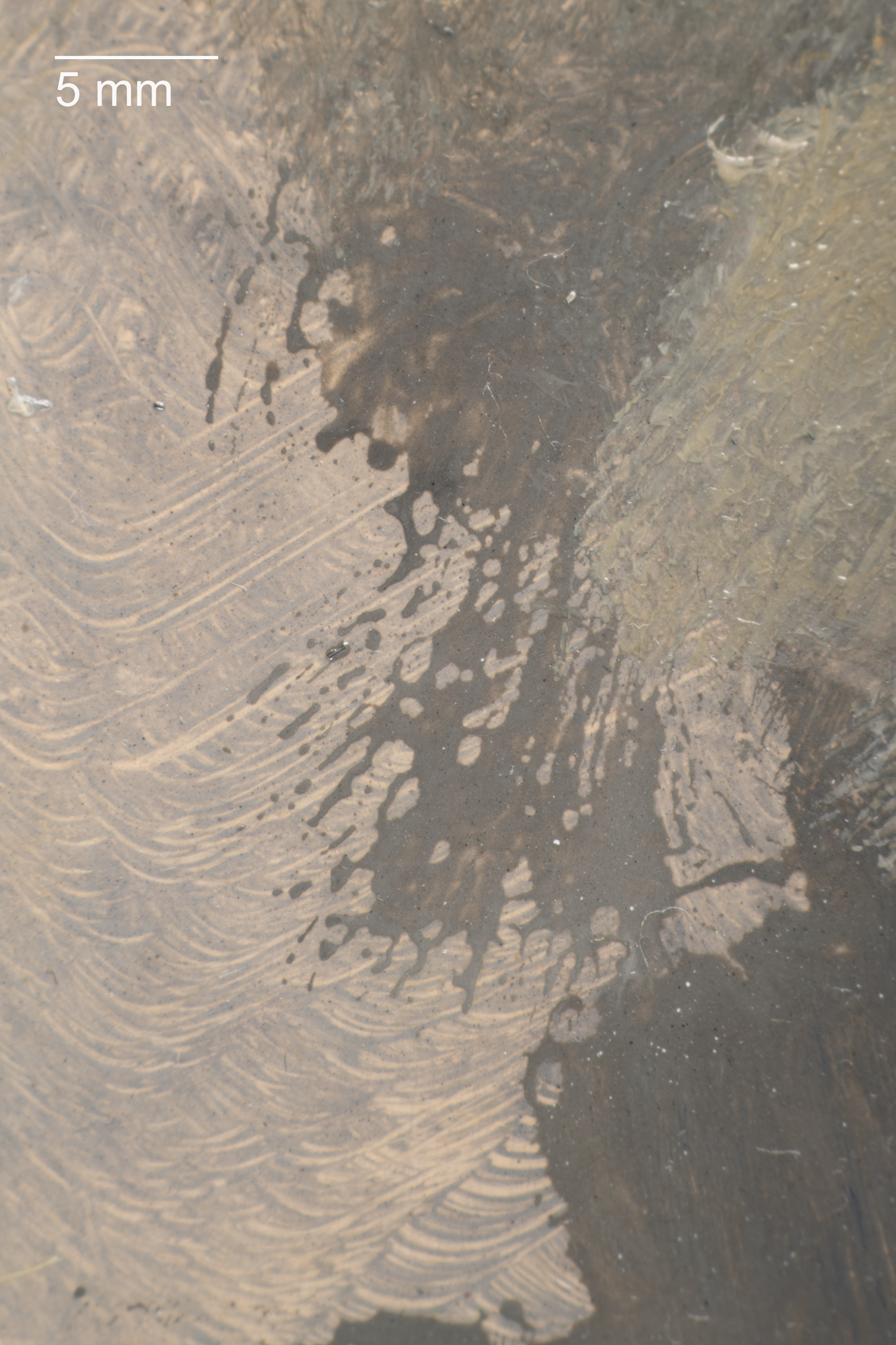 Fig. 6. Photomicrograph of the reticulated gray paint on the lower right cloud, The Approaching Storm (1872)
Fig. 6. Photomicrograph of the reticulated gray paint on the lower right cloud, The Approaching Storm (1872)
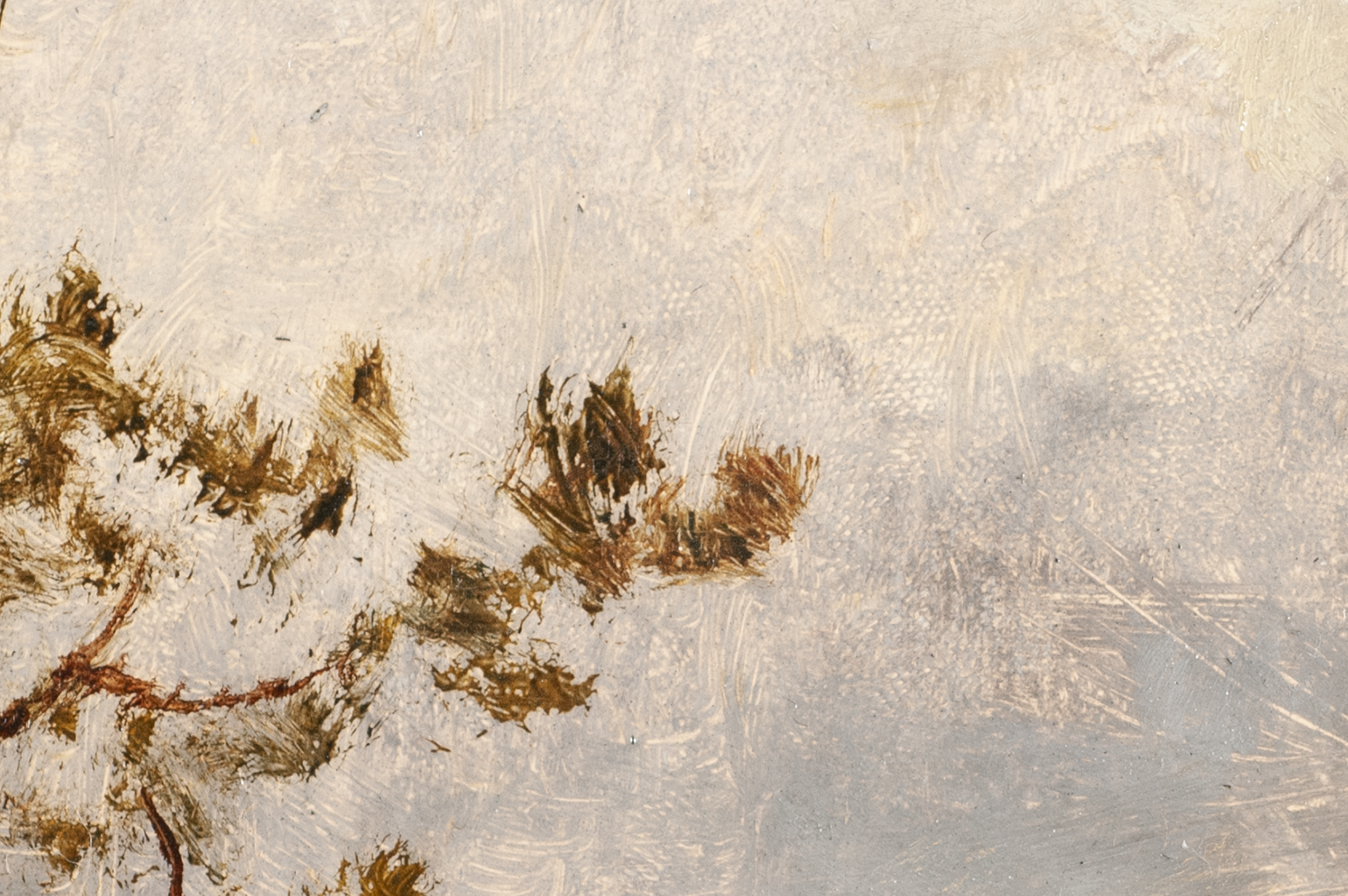 Fig. 7. Detail of a weave impression in the sky and the stippled brushwork of a tree, The Approaching Storm (1872)
Fig. 7. Detail of a weave impression in the sky and the stippled brushwork of a tree, The Approaching Storm (1872)
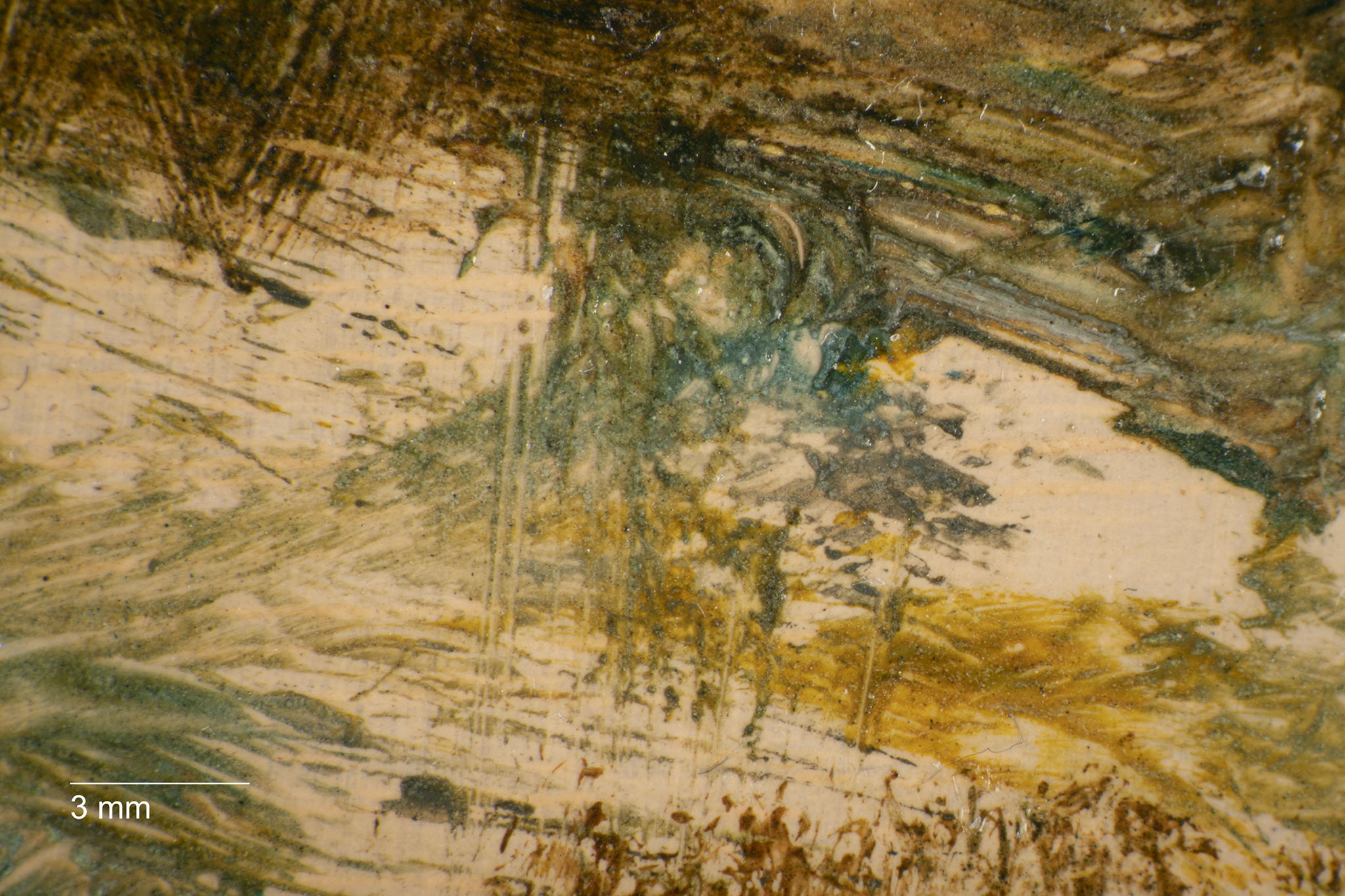 Fig. 8. Photomicrograph of the foreground of The Approaching Storm (1872), showing a streaked pale gray underpainting on top of the pink ground
Fig. 8. Photomicrograph of the foreground of The Approaching Storm (1872), showing a streaked pale gray underpainting on top of the pink ground
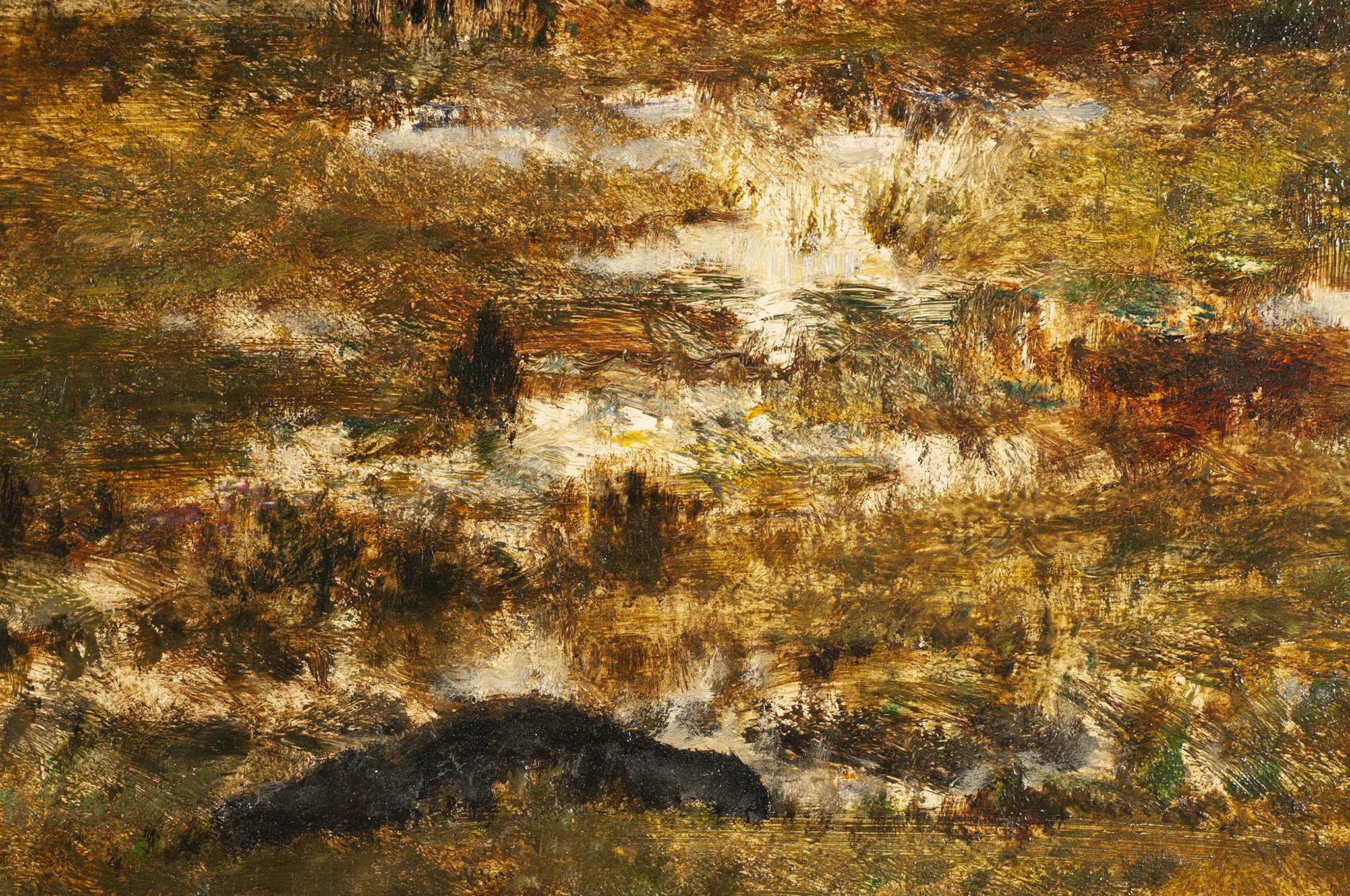 Fig. 9. Detail of the dry brushwork in the foreground of The Approaching Storm (1872)
Fig. 9. Detail of the dry brushwork in the foreground of The Approaching Storm (1872)
The sky and group of oak trees at left appear to have been painted in unison. While the upper section of the trees was painted on top of a thin gray layer of sky, this is not the case for the middle and lower sections. In the final stages of painting, Diaz added blue and gray paint around the left side of the tree grouping, cropping the height of the leftmost tree in the process. The underlying yellow brown paint remains faintly visible beneath the gray clouds, revealing this pentimentopentimento (pl: pentimenti): A change to the composition made by the artist that is visible on the paint surface. Often with time, pentimenti become more visible as the upper layers of paint become more transparent with age. Italian for "repentance" or "a change of mind." (Fig. 10). In a similar manner, Diaz slightly modified the shape of the treetops along the horizon with overlapping gray paint.
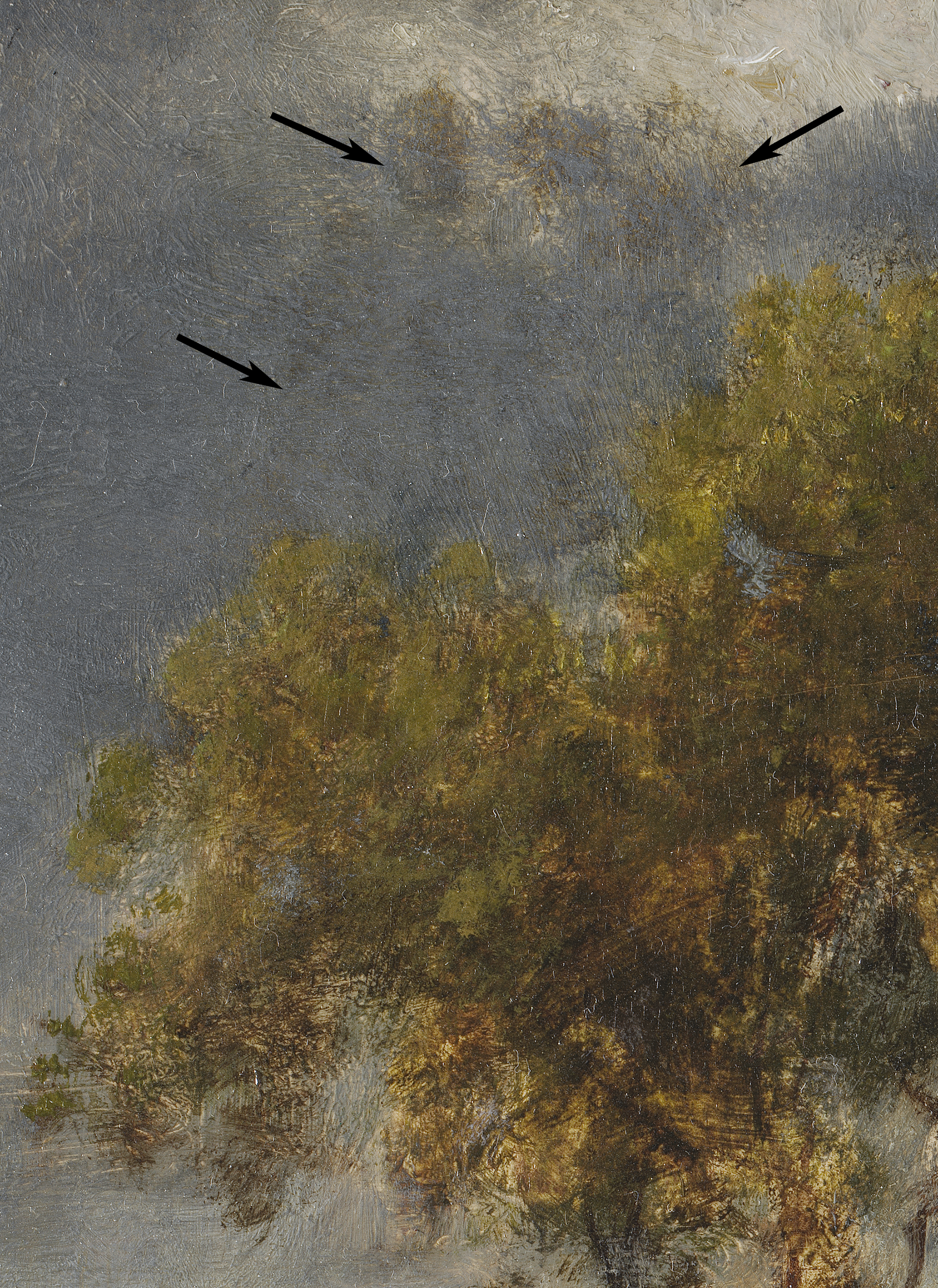 Fig. 10. Detail of the leftmost oak tree in The Approaching Storm (1872), showing the pentimento of the overpainted branches
Fig. 10. Detail of the leftmost oak tree in The Approaching Storm (1872), showing the pentimento of the overpainted branches
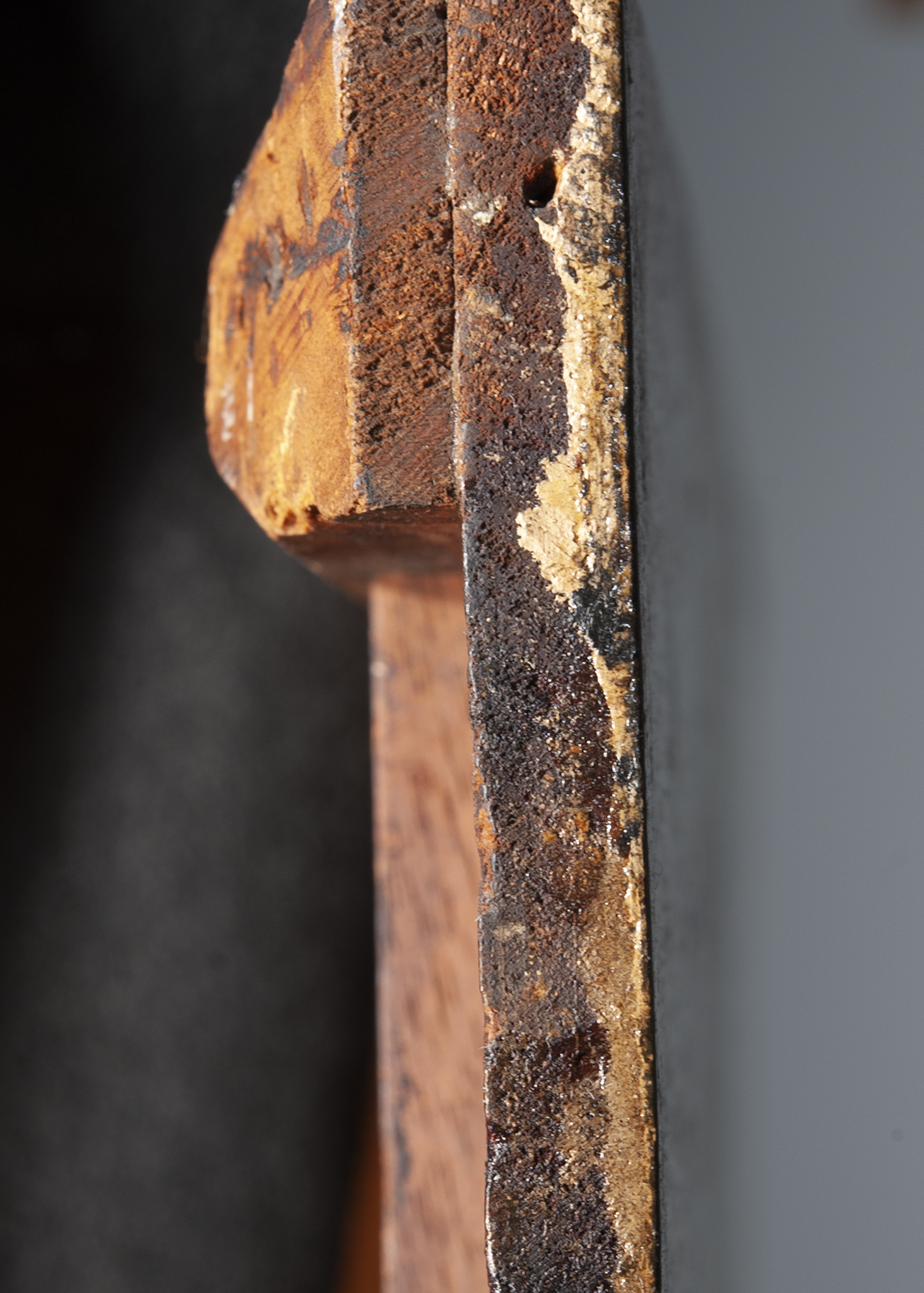 Fig. 11. Detail of the left panel edge of The Approaching Storm (1872)
Fig. 11. Detail of the left panel edge of The Approaching Storm (1872)
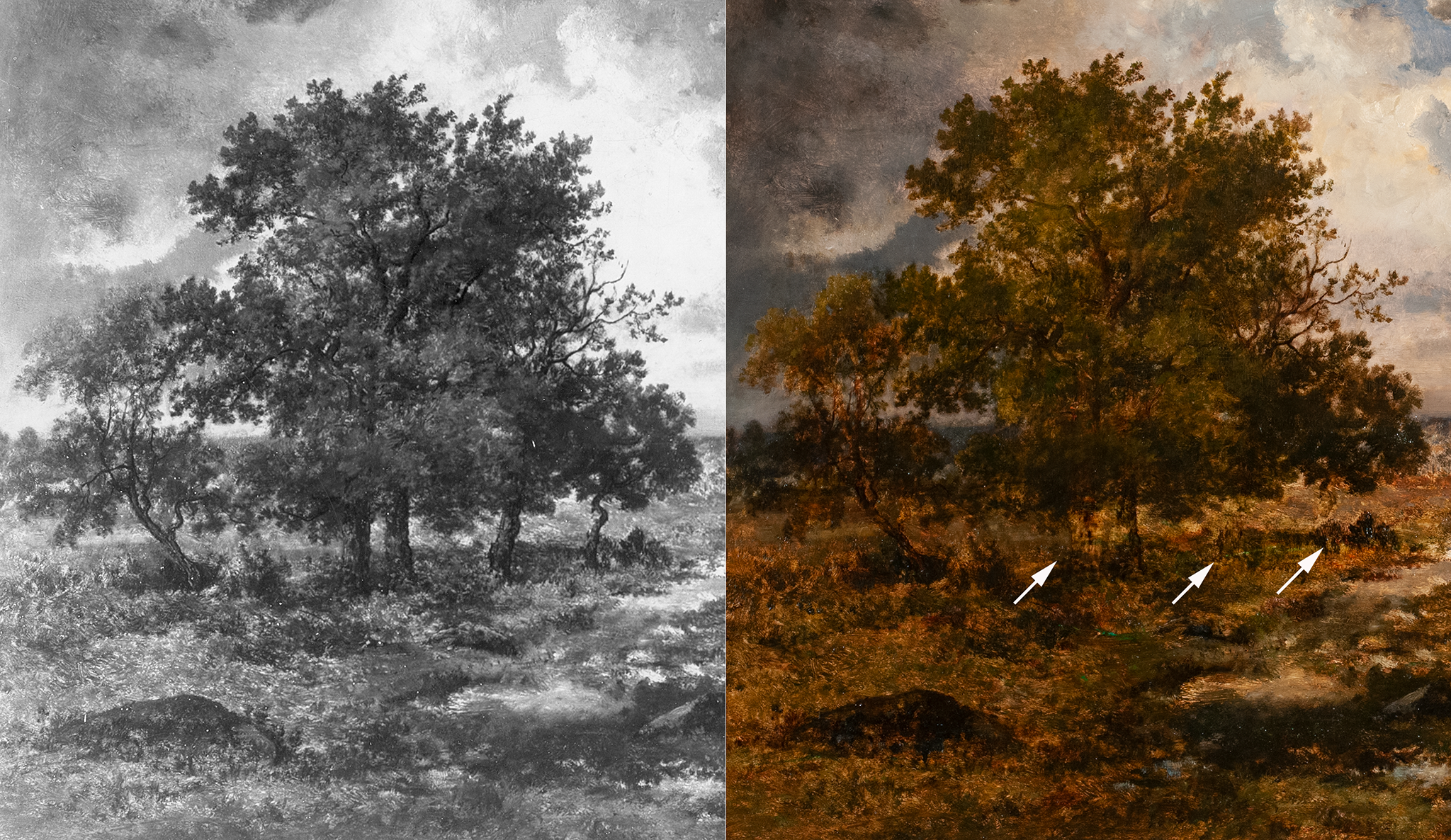 Fig. 12. On the left, a detail of the oak trees from an early photograph of The Approaching Storm (1872); on the right, a detail of the overcleaned trees before treatment in 2013
Fig. 12. On the left, a detail of the oak trees from an early photograph of The Approaching Storm (1872); on the right, a detail of the overcleaned trees before treatment in 2013
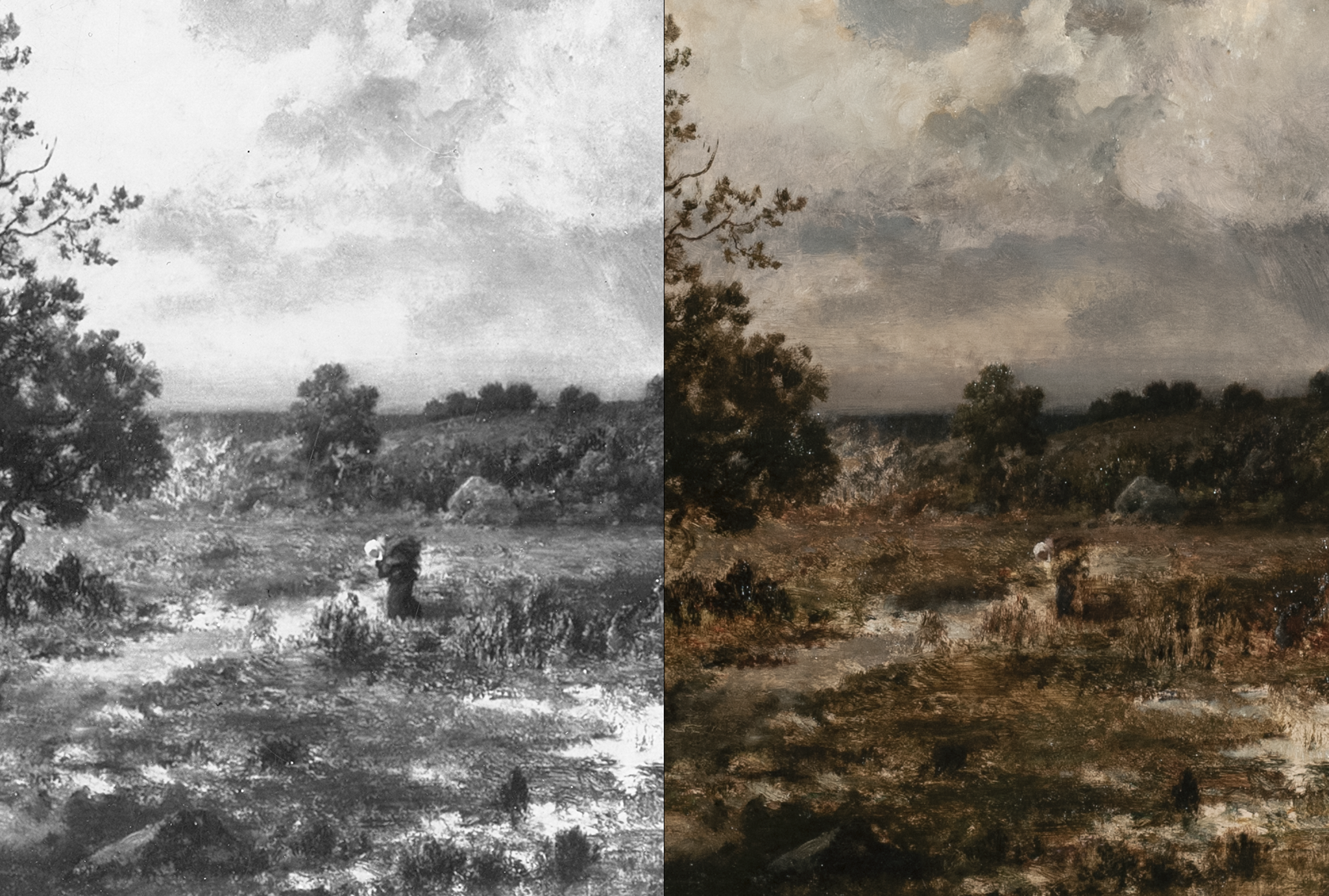 Fig. 13. On the left, a detail of the central figure from an early photograph of The Approaching Storm (1872); on the right, a detail of the overcleaned figure before treatment in 2013
Fig. 13. On the left, a detail of the central figure from an early photograph of The Approaching Storm (1872); on the right, a detail of the overcleaned figure before treatment in 2013
Notes
-
Diaz frequently painted on large panel supports despite recommendations against their use; see, for example, Lisière de Fôret (1871; Musèe D’Orsay) and The Storm (1871; National Gallery of Art, London). Stéphanie Constantin, “The Painters of the Barbizon Circle and Landscape Paintings: Techniques and Working Methods” (PhD diss., Courtauld Institute of Art, 2001), 160–61.
-
Constantin, “The Painters of the Barbizon Circle and Landscape Paintings,” 164. “[The Barbizon painters] mostly chose white or off-white preparations. Occasionally they would paint on toned preparations of a light gray or brown colour or, more rarely, on supports prepared in strong yellow ochre, lilac-pink, brown or even reddish orange.”
-
James Roth, June 2, 1969, treatment report, Nelson-Atkins conservation file, no. 31-60.
-
Forrest Bailey, July 1, 1989, treatment report, Nelson-Atkins conservation file, no. 31-60.
-
Mary Schafer, January 25, 2013, examination report, Nelson-Atkins conservation file, no. 31-60.
-
Photograph, undated, Nelson-Atkins conservation file, no. 31-60.
Documentation
Citation
Chicago:
Danielle Hampton Cullen, “Narcisse Virgile Diaz de la Peña, The Approaching Storm, 1872,” documentation in ed. Aimee Marcereau DeGalan French Paintings and Pastels, 1600–1945: The Collections of the Nelson-Atkins Museum of Art (Kansas City: The Nelson-Atkins Museum of Art, 2021), https://doi.org/10.37764/78973.5.514.4033.
MLA:
Hampton Cullen, Danielle. “Narcisse Virgile Diaz de la Peña, The Approaching Storm, 1872,” documentation. French Paintings and Pastels, 1600–1945: The Collections of the Nelson-Atkins Museum of Art, edited by Aimee Marcereau DeGalan, The Nelson-Atkins Museum of Art, 2021. doi: 10.37764/78973.5.514.4033
Provenance
Citation
Chicago:
Danielle Hampton Cullen, “Narcisse Virgile Diaz de la Peña, The Approaching Storm, 1872,” documentation in ed. Aimee Marcereau DeGalan French Paintings and Pastels, 1600–1945: The Collections of the Nelson-Atkins Museum of Art (Kansas City: The Nelson-Atkins Museum of Art, 2021), https://doi.org/10.37764/78973.5.514.4033.
MLA:
Hampton Cullen, Danielle. “Narcisse Virgile Diaz de la Peña, The Approaching Storm, 1872,” documentation. French Paintings and Pastels, 1600–1945: The Collections of the Nelson-Atkins Museum of Art, edited by Aimee Marcereau DeGalan, The Nelson-Atkins Museum of Art, 2021. doi: 10.37764/78973.5.514.4033.
Adolph Thiem (1832–1923), San Remo, Italy, and Berlin, by June 2, 1881;
Purchased from Thiem by Goupil et Cie, Paris, stock book 10, no. 15481, as Paysage, June 2–20, 1881 [1];
Purchased from Goupil et Cie by Knoedler and Co., New York, stock book 3, no. 3467, as Paysage, August 28, 1881–January 23, 1882 [2];
Purchased from Knoedler by Horatio Victor Newcomb (1844–1911), New York, January 23, 1882–1891;
Trustees of H[oratio] Victor Newcomb (General Wager Swayne and James A. Howes), New York, 1891–1903 [3];
Purchased at his estate sale, Valuable paintings and water colors to be sold at unrestricted public sale by order of the executors and trustee of the estates of the late Clarence King, William H. Fuller and Theodore G. Weil, the trustees of H. Victor Newcomb, and to close an estate represented by Zabriskie, Burrill and Murray, attorneys, American Art Association, New York, March 12–13, 1903, lot 156, as Landscape, by John Andrew Hoagland (1871–1942), New York, 1903–April 26, 1905 [4];
Purchased from Hoagland by Scott and Fowles, New York, in half-shares with Knoedler and Co., New York, stock book 5, no. 10709, as After the Storm, April 26–May 17, 1905 [5];
Purchased from Scott and Fowles by James Jewett Stillman (1850–1918), New York, after May 17, 1905–March 15, 1918 [6];
Inherited by his son, Charles Chauncey Stillman (1877–1926), Cornwall, NY, 1918–April 14, 1926;
Purchased from his sale, American, Barbizon and Dutch Paintings from the Collections of Mr. J. J. Albright, Buffalo, N.Y., H. E. Farrell, Houston, Texas, Chas. D. Morgan, Paris France, WM. H. McGee, New York, Frederick Rider, New York, H.L. Warner, Cleveland, Ohio, Geo. Blake Dexter, Boston, Mass., James Stillman, New York, Sold by Order of his Son, C.C. Stillman, sale no. 2056, Anderson Galleries, New York, April 14, 1926, lot no. 34, as Coming Storm, by Scott and Fowles, New York, possible stock no. 735, April 14, 1926–January 28, 1931;
Purchased from Scott and Fowles, through Harold Woodbury Parsons, by The Nelson-Atkins Museum of Art, Kansas City, MO, 1931.
Notes
[1] See “Galerie Boussod, Valadon Stock Books, Livre no. 10, 1877–1882,” The Getty Research Institute, Los Angeles, Dealer Stock Books, page 172, row 7, stock no. 15481, as Paysage.
[2] See “Painting stock book 3: 1-4368, 1875 December–1883 December,” Getty Research Institute, Los Angeles, M. Knoedler and Co records, page 154, row 13, stock no. 3467. While Boussod, Valadon listed the date they sold the painting to Knoedler as June 20, 1881, Knoedler did not enter the painting into their stock book until August 28.
[3] Horatio Victor Newcomb was forced to resign as president of Louisville and Nashville Railroad in 1881 due to poor mental health. By 1891, the courts appointed General Wager Swayne and James A. Howes as the trustees of his estate; see Bryan S. Bush, The Men Who Built Louisville: The City of Progress in the Gilded Age (Charleston, SC: The History Press, 2019), 92–93.
[4] See “J.a. Hoagland, 16,000” inscribed in the annotated sales catalogue in the collection of the Thomas J. Watson Library, The Metropolitan Museum of Art, New York, https://archive.org/details/b1496861/page/n99/mode/2up.
[5] A stock book for Scott and Fowles cannot be located. Knoedler bought a half-share in the painting from Scott and Fowles in April and sold their share back to the company in May. See “Knoedler and Co. Records,” The Getty Research Institute, Los Angeles, Painting stock book 5: 8800–12652, 1899 April–1911 December, page 107, stock no. 10709, as After the Storm. See also small, faded adhesive label with black ink typewriter inscriptions on painting’s verso: “10709”. This probably means that Scott and Fowles found a buyer for the painting by May 1905. See also correspondence from Stevenson Scott, Scott and Fowles, New York, to Harold Woodbury Parsons, NAMA art advisor, February 2, 1931, NAMA curatorial files, where Scott says that shortly after his purchase of the painting from Hoagland, he sold it to Stillman. He does not give a precise date.
[6] See correspondence from Stevenson Scott, Scott and Fowles, New York, to Harold Woodbury Parsons, NAMA art advisor, February 2, 1931, NAMA curatorial files.
Related Works
Citation
Chicago:
Danielle Hampton Cullen, “Narcisse Virgile Diaz de la Peña, The Approaching Storm, 1872,” documentation in ed. Aimee Marcereau DeGalan French Paintings and Pastels, 1600–1945: The Collections of the Nelson-Atkins Museum of Art (Kansas City: The Nelson-Atkins Museum of Art, 2021), https://doi.org/10.37764/78973.5.514.4033.
MLA:
Hampton Cullen, Danielle. “Narcisse Virgile Diaz de la Peña, The Approaching Storm, 1872,” documentation. French Paintings and Pastels, 1600–1945: The Collections of the Nelson-Atkins Museum of Art, edited by Aimee Marcereau DeGalan, The Nelson-Atkins Museum of Art, 2021. doi: 10.37764/78973.5.514.4033.
Narcisse Virgile Diaz de la Peña, Approaching Storm, 1870, oil on canvas, 33 1/4 x 41 5/8 in. (84.4 x 105.7 cm), Norton Simon Museum, Pasadena, CA.
Narcisse Virgile Diaz de la Peña, The Storm, 1871, oil on mahogany, 24 1/8 x 30 1/8 in. (61.3 x 76.6 cm), National Gallery, London.
Narcisse Virgile Diaz de la Peña, Approaching the Storm, 1872, oil on panel, 22 x 27 15/16 in. (56 x 71 cm), Johnston collection.
Narcisse Virgile Diaz de la Peña, The Storm, 1872, oil on canvas, 15 x 22 1/3 in. (38.1 x 56.2 cm), location unknown, illustrated in Impressionist and Modern Art Day Sale (New York: Sotheby’s, October 15, 2020).
Narcisse Virgile Diaz de la Peña, The Storm, 1872, oil on panel, 23 1/8 x 33 3/4 in. (58.7 x 85.7 cm), Walters Art Museum, Baltimore, MD.
Narcisse Virgile Diaz de la Peña, The Storm, oil on panel, 9 1/2 x 13 in. (24 x 32.7 cm), location unknown, illustrated in 19th Century European Paintings, including German, Austrian, Hungarian and Slavic paintings, the Orientalist Sale, and the Scandinavian Sale (New York: Sotheby’s, June 15, 2004), 163, as L’Orage.
Exhibitions
Citation
Chicago:
Danielle Hampton Cullen, “Narcisse Virgile Diaz de la Peña, The Approaching Storm, 1872,” documentation in ed. Aimee Marcereau DeGalan French Paintings and Pastels, 1600–1945: The Collections of the Nelson-Atkins Museum of Art (Kansas City: The Nelson-Atkins Museum of Art, 2021), https://doi.org/10.37764/78973.5.514.4033.
MLA:
Hampton Cullen, Danielle. “Narcisse Virgile Diaz de la Peña, The Approaching Storm, 1872,” documentation. French Paintings and Pastels, 1600–1945: The Collections of the Nelson-Atkins Museum of Art, edited by Aimee Marcereau DeGalan, The Nelson-Atkins Museum of Art, 2021. doi: 10.37764/78973.5.514.4033.
Possibly Exposition des Œuvres de N. Diaz de la Peña à l’École nationale des beaux-arts, l’École nationale des beaux-arts, Paris, 1877, no. 111, as Les Grès; effet d’orage, or no. 112, as L’Orage en plaine.
Winslow Homer and the Critics: Forging a National Art in the 1870s, The Nelson-Atkins Museum of Art, Kansas City, MO, February 18–May 6, 2001; Los Angeles County Museum of Art, June 10–September 9, 2001; High Museum of Art, Atlanta, October 6, 2001–January 6, 2002, (Kansas City only), hors cat.
Impressionist France: Visions of Nation from Le Gray to Monet, The Nelson-Atkins Museum of Art, Kansas City, MO, October 19, 2013–February 9, 2014; Saint Louis Museum of Art, March 16–July 6, 2014, no. 43, as The Approaching Storm.
References
Citation
Chicago:
Danielle Hampton Cullen, “Narcisse Virgile Diaz de la Peña, The Approaching Storm, 1872,” documentation in ed. Aimee Marcereau DeGalan French Paintings and Pastels, 1600–1945: The Collections of the Nelson-Atkins Museum of Art (Kansas City: The Nelson-Atkins Museum of Art, 2021), https://doi.org/10.37764/78973.5.514.4033.
MLA:
Hampton Cullen, Danielle. “Narcisse Virgile Diaz de la Peña, The Approaching Storm, 1872,” documentation. French Paintings and Pastels, 1600–1945: The Collections of the Nelson-Atkins Museum of Art, edited by Aimee Marcereau DeGalan, The Nelson-Atkins Museum of Art, 2021. doi: 10.37764/78973.5.514.4033.
Possibly Jules Claretie, Exposition des Œuvres de N. Diaz de la Peña à l’École nationale des beaux-arts, exh. cat. (Paris: Impr. J. Claye, 1877), 50–51, as Les Grès; effet d’orage, or L’Orage en plaine.
“Oils and Water Colors Sold: King, Fuller, Weil, and Newcomb Collections at Auction—Incidents of the Evening,” New York Times 52, no. 16,594 (March 13, 1903): 5.
“Many Pictures at Auction: Landscape by Virgile secured for $16,000 at Mendeissohn Hall,” New York Times 52, no. 16,595 (March 14, 1903): 9, as Landscape.
“Some Recent Art Sales,” Brush and Pen 12, no. 1 (April 1903): 76, as Landscape.
“Auction Sales of Paintings, 1900–1903,” American Art Annual 4 (1903–1904): 54, as Landscape.
Catalogue of Valuable Paintings and Water Colors to be sold at unrestricted public sale by order of the executors and trustee of the estates of the late Clarence King, William H. Fuller and Theodore G. Weil, the trustees of H. Victor Newcomb, and to close an estate represented by Zabriskie, Burrill and Murray, attorneys (New York: American Art Association, 1903), as Landscape.
Arthur Hoeber, The Barbizon Painters: Being the Story of the Men of Thirty (New York: Frederick A. Stokes Company, 1915), unpaginated, (repro.), as Landscape.
Probably “Stillman Art Appraised,” American Art News 17, no. 28 (April 19, 1919): 1, as Landscape with Figure.
American, Barbizon and Dutch Paintings from the Collections of Mr. J. J. Albright, Buffalo, N.Y., H. E. Farrell, Houston, Texas, Chas. D. Morgan, Paris France, WM. H. McGee, New York, Frederick Rider, New York, H.L. Warner, Cleveland, Ohio, Geo. Blake Dexter, Boston, Mass., James Stillman, New York, Sold by Order of his Son, C.C. Stillman (New York: The Anderson Galleries, 1926), 15, (repro.), as Coming Storm.
“Half-Million for Art: A Rembrandt in New Purchases for Nelson Gallery,” Kansas City Star 51, no. 156 (February 20, 1931): 3.
“Kansas City Gets $1,000,000 Art Here,” New York Times 80, no. 26,690 (February 20, 1931): 24.
“Nelson Trust Pays Million for Art,” Jackson, MS, paper (February 20, 1931), clipping, scrapbook, NAMA Archives, vol. 1, 49.
“Museum Accessions,” American Magazine 22, no. 4 (April 1931): 297.
“Gift to Nelson Gallery: Sir Joseph Duveen Presents Carpeaux’s ‘Crouching Venus’,” Kansas City Star 51, no. 198 (April 3, 1931): 1, as Coming Storm.
“New Nelson Art Treasures To Be Shown at Dinner: Annual Trustees Party at Art Institute Tomorrow Night,” Kansas City Journal-Post 77, no. 300 (April 3, 1931): 8, as Coming Storm.
“Dine with Art Trustees: Institute Board Bids Others to Annual Meeting Tonight,” Kansas City Times 94, no. 81 (April 4, 1931): 2.
“In Gallery and Studio,” Kansas City Star 51, no. 262 (June 6, 1931): E.
“What to See In Kansas City: A Guide to Principal Points of Interest Presented in the Style of A Baedeker,” Kansas City Star 52, no. 101 (December 27, 1931): 3C, as Coming Storm.
“Nelson Gallery of Art Special Number,” Art Digest 8, no. 5 (December 1, 1933): 21, as Coming Storm.
“The William Rockhill Nelson Gallery of Art, Kansas City Special Number,” Art News 32, no. 10 (December 9, 1933): 28, 30, as Coming Storm.
The William Rockhill Nelson Gallery of Art and Mary Atkins Museum of Fine Arts, Handbook of the William Rockhill Nelson Gallery of Art (Kansas City, MO: William Rockhill Nelson Gallery of Art and Mary Atkins Museum of Fine Arts, 1933), 136, Coming Storm.
Ross E. Taggart, ed., Handbook of the Collections in the William Rockhill Nelson Gallery of Art and Mary Atkins Museum of Fine Arts, 4th ed. (Kansas City, MO: William Rockhill Nelson Gallery of Art and Mary Atkins Museum of Fine Arts, 1959), 26, as Coming Storm.
Ross E. Taggart and George L. McKenna, eds., Handbook of the Collections in The William Rockhill Nelson Gallery of Art and Mary Atkins Museum of Fine Arts, Kansas City, Missouri, vol. 1, Art of the Occident, 5th ed. (Kansas City, MO: William Rockhill Nelson Gallery of Art and Mary Atkins Museum of Fine Arts, 1973), 258, as Coming Storm.
Roger Ward and Patricia J. Fidler, eds., The Nelson-Atkins Museum of Art: A Handbook of the Collection (New York: Hudson Hills Press, in association with Nelson-Atkins Museum of Art, 1993), 205, as The Approaching Storm.
“Know Your Museum Tour: ‘Up in the Clouds’,” Newsletter (The Nelson-Atkins Museum of Art) (June 2003): 7, as The Approaching Storm.
Pierre Miquel and Rolande Miquel, Narcisse Diaz de la Peña: monographie et catalogue raisonné de l’œuvre peint (Paris: ACR Édition, 2006), 253, as Paysanne, Nuages, terrain marécageux, chênes à gauche, au loin collines basses et boisées.
Deborah Emont Scott, ed., The Nelson-Atkins Museum of Art: A Handbook of the Collection, 7th ed. (Kansas City, MO: Nelson-Atkins Museum of Art, 2008), 117, as The Approaching Storm.
Alice Thorson, “Nelson’s ‘Impressionist France’ offers an insider’s guide to a country in transition,” Kansas City Star (November 8, 2013): page number unknown.
Alice Thorson, “A Journey in Art and France,” Kansas City Star, no. 54 (November 10, 2013): D2.
Simon Kelly and April M. Watson, Impressionist France: Visions of Nation from Le Gray to Monet, exh. cat. (Saint Louis, MO: Saint Louis Art Museum, 2013), 154–55, (repro.), as The Approaching Storm.
Catherine Futter et al., Bloch Galleries: Highlights from the Collection of the Nelson-Atkins Museum of Art (Kansas City, MO: Nelson-Atkins Museum of Art, 2016), 36, (repro.), as The Approaching Storm.
